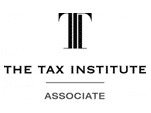It was coined as a ‘gamechanger’- an ETF that can be bought and sold on the ASX or Cboe Australia but that can also be applied for, and redeemed, directly with the issuer. This duality and ability to take on both the characteristics of a traditional unlisted unit of a managed fund and an ETF and what I call a ‘chameleon ETF’ has been a growing trend since the launch of its kind by Magellan’s Airlie Australian Share Fund on the ASX in 2020. (ASIC’s ETF labelling guidelines set out in ASIC Information Sheet 230 – Exchange traded product: Admission Guidelines (INFO 230) does not have a specific product label for this.)
Why the buzz?
It is a relatively easy way for issuers to turn existing unlisted managed fund products in their line up to also be available to investors on the ASX or Cboe Australia and tap into the ETF market. While in one sense it does not involve the same level of investment and risk as setting up a whole new ETF class, the process does involve a product application for quotation of the fund to the relevant exchange, additional set up with the administrator and amendments to the fund’s constitution to support the duality structure, amendments which generally can be made without the need for approval at a unitholder meeting.
Benefits
From a business perspective, there are obvious efficiencies for issuers from only operating the one class of units rather than a multiclass structure with one unlisted class and one ETF class. Having one class with overall higher funds under management can create efficiencies (particularly for the investment manager) and by only operating the one class from an administration, audit and reporting perspective, may potentially translate into lower expenses for the fund and lower fees for investors.
It’s also a sleek sell to investors: you can come in and out of the fund via the exchange or directly with the issuer- the choice is yours, and in the case that ‘Armageddon’ occurs on an exchange and you unable to trade, subject to the usual market factors and liquidity, there is the fallback of being able to transact and redeem your units with the issuer directly. Interestingly, while this duality has been a sales feature, anecdotally issuers have found few investors chop and change with transacting on the exchange and then directly with the issuer and choose one or the other- I guess it’s true that we are ultimately ‘creatures of habit.’ This has meant that, practically, administrators supporting this structure with systems typically with some level of manual process have not really been put to the test.
A growing structure of choice
Since coming onto the scene in 2020, the chameleon ETF structure has been the preferred choice; for existing issuers looking to leverage existing unlisted fund offerings and new entrants looking to launch their very first ETF. Some traditional ETF issuers still firmly believe in the multiclass structure and continue to set up a separate ETF class of their funds. There are merits to this approach, in particular given some issuers prefer to keep their sales and distribution strategies for unlisted managed funds and ETFs separate and not conflate the two when talking to investors. In terms of labelling, the unlisted managed fund product is not subject to the ASIC’s ETF labelling guidelines, which (under the latest iteration of INFO 230) depending on the features of the product may require issuers to label them as ‘complex,’ – this may be undesirable for some issuers from the perspective of market positioning of a product with investors.
In terms of disclosure for chameleon ETFs, great care is taken to explain and disclose to an investor that the price that you transact at via the exchange may vary to the price if you had transacted directly with the issuer- this can be an odd outcome for investors to understand given it is the same class but you can end up transacting at a different price purely because you come through a different door. There is also a question of the practical value to investors to have the duality structure, particularly for those ‘creatures of habit’ investors that are happy to only transact directly with the issuer and never practically utilise the option of transacting on the exchange. The duality structure means the fund is subject to additional exchange rules, disclosure and reporting requirements which can add to the fees and costs for the fund and for investors.
What the future holds
Time will tell whether the chameleon ETF is here to stay in the longer term as investor preferences and regulatory settings in the ETF market evolve over time. But it is certainly a sign of innovation, growth and maturation of the ETF market in Australia which is now just over 20 years old, and bringing greater competition and product diversity for ETF investors which is great to see.








